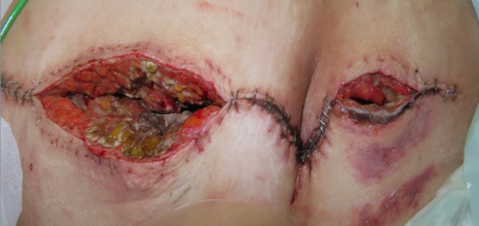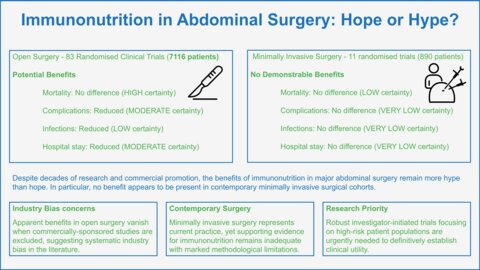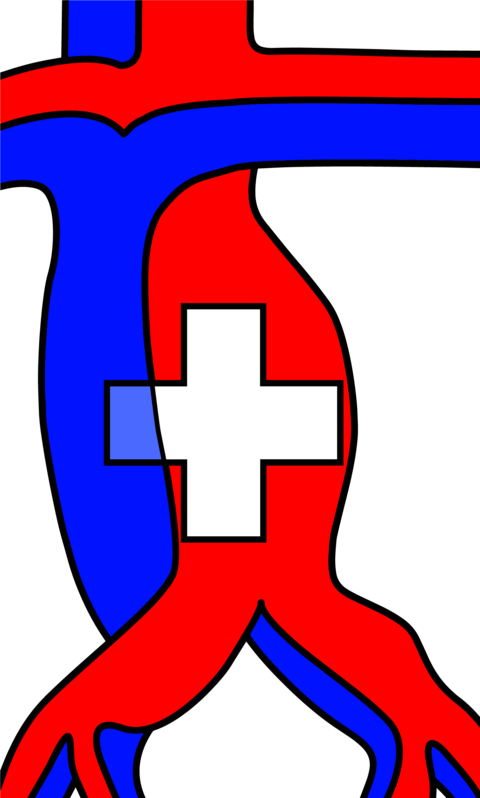The hook
Did you watch the short movie “The Hunt for Buddy the Knife”? Yes? Do you like it? If you have not watched it yet, have at least a look at Figure 1 and I will briefly summarize the short movie for you.
Rectham City, 1925. The city’s residents enjoy the golden twenties. Suddenly, someone evil steps into action: Buddy the Knife. He is up to mischief in all districts. First, in the district Mucosa, then consequently in the districts Submucosa, Muscularis and Subserosa, respectively. The Police are powerless. Frightened, people do not dare to leave the house anymore. This is the moment for Surgy, the city’s best detective. She investigates the case and realizes the need for support. She calls her best friend Patho who travels from a neighboring town to Rectham City. Their investigation leads to one conclusion: Buddy the Knife is planning his next move, namely his escape to his next destination: the City of Lungshire. Buddy must avoid all the Police’s numerous check points and there is only one way: the escape across the river Vessel. Surgy and Patho hatch a plan. Patho profiles Buddy, whereas Surgy tracks him on the field. That’s exactly how the Hunt for Buddy the Knife started. Shall we have a look at the story’s end? Then let’s go back to business.
The setup
Over the last decade interdisciplinary tumor boards have been an important platform to optimize patient treatment. The preoperative management of rectal cancer patients is a clinical scenario where different disciplines such as Gastroenterology, Radiology, Radio-Oncology, Surgery and Tissue Medicine concentrate on the best treatment options. Based on the change of our own affiliation and to push the vision of our institution I replaced on purpose the term “Pathology” by “Tissue Medicine”.
The question arises what information Tissue Medicine can retrieve from a preoperative rectal biopsy in the above-mentioned clinical scenario. Let’s be pragmatic: First, the cancer diagnosis; second, the cancer’s subtype: adenocarcinoma, mucinous carcinoma, squamous cell carcinoma, other; third, the tumor grade, but caveat: the definition based on the ICCR guidelines(1, 2) is not trivial and can lead to misunderstandings; fourth, the microsatellite status; since the publication by Cercek et al. (3) the role of immunotherapy plays an important role in the treatment of rectal cancer(4). Fifth, intratumoral budding (ITB)?
The confrontation
Tumor budding (TB) is a prognostic biomarker and a predictor of tumor progression, not only in colorectal cancer, but also in several other solid tumors(5). Here is a concise sentence to the pathogenetic journey of TB: a tumor bud detaches itself from the main tumor body, it escapes the immune response, it fights its way through the bowel wall, attacks the vessels and lands into the lymphatic and blood system(5). In other words, tumor buds are the cancer’s special force. TB was particularly boosted by the proposal of standardization at the International Tumor Budding Conference (ITBCC) in 2016 in Bern(6). The usual perception is to assess TB in the postoperative resection specimen. But Morodomi already described in 1989 the presence of budding cancer cells also in rectal biopsies(7). This observation inspired other authors to stratify TB into peritumoral budding (PTB) at the cancer’s invasive front and intratumoral budding (ITB) in the main tumor body and therefore also detecable in biopsies(8). Since 2011, many studies have been published on ITB with the aim to overcome the hurdles before its implementation into daily practice(9). The questions still addressed are the following: How is ITB defined? What is the prognostic and/or predictive power? How should ITB be assessed in biopsies? By conventional H&E staining or by immunohistochemistry? Should ITB be scored by eyeballing or by an algorithm?
The resolution
The presence of ITB in rectal biopsies
ITB is defined as PTB, assessed within the main tumor body, and correlated with PTB(8, 10-12). The ITBCC recommended in 2016 the need for further data before the implementation of ITB reporting in preoperative biopsies(6). Since then, several studies reported on the association between ITB and lymph node and distant metastases, recurrence, and decreased survival time in colorectal cancer(9).
The prognostic/predictive role of ITB
ITB can be detected in rectal and colonic biopsies and is correlated with PTB(13). ITB seems to be a predictor of tumor regression and response to neoadjuvant therapy in rectal cancer patients(14). A further interesting aspect is the “attacker-defender” approach including ITB and cytotoxic T-lymphocytes potentially associated with response to neoadjuvant therapy and survival(13, 15-17).
The assessment of ITB
ITB can be assessed in biopsies by H&E stains or by immunohistochemistry (pan-cytokeratin marker) with similar results in regard of the prognostic and/or predictive power(18). Nevertheless, the experience in daily practice reveals the well-known problem of the inter-observer variability when stains are scored by “eyeballing”. The use of algorithms can eventually solve this problem. Indeed, in a recent study ITB was assessed using an algorithm and its presence in rectal cancer biopsies reduced the probability of a pathological complete response and was associated with poor prognosis(19).
The perspective
If we rely on the data on the literature, we may aim for the assessment of the following additional three parameters in rectal cancer biopsies in the future: microsatellite status using immunohistochemistry and a potential combined score of ITB/cytotoxic T-lymphocytes using an algorithm. Why? Because they may help in the preoperative setting when deciding if a neo-adjuvant therapy is indicated or not.
In summary, three take-home messages:
1. ITB is a robust biomarker assessable in rectal cancer biopsies.
2. A combined score including ITB and cytotoxic T-lymphocytes better reflects the pathogenetic dynamics in the tumor microenvironment of rectal cancer.
3. Validated and proofed algorithms for ITB and cytotoxic T-lymphocytes are desirable.
The ending
Let us go briefly back to Surgy and Patho. Both are aware that Buddy the Knife exists and that he is enormously dangerous. They also know that they must prevent Buddy from escaping by the river Vessel. If Buddy succeeds in getting to Lungshire, many other cities would be at risk.
If you already watched the short movie “The Hunt for Budding the Knife” you can finally get rid of me with a good conscience. If you did not, then it’s time to watch it.
- Loughrey M, Arends M, Brown I, Burgart L, Cunningham C, Flejou JF, et al. Colorectal Cancer Histopathology Reporting Guide. International Collaboration on Cancer Reporting. Sydney, Australia. 2020.
- Loughrey MB AM, Brown I, Burgart LJ, Cunningham C, Flejou JF, Kakar S, Kirsch R, Kojima M, Lugli A, Rosty C, Sheahan K, West NP, Wilson R, Nagtegaal ID. Colorectal Cancer Histopathology Reporting Guide. In: Reporting ICoC, editor. 1st edition ed. Sydney, Australia2020.
- Cercek A, Lumish M, Sinopoli J, Weiss J, Shia J, Lamendola-Essel M, et al. PD-1 Blockade in Mismatch Repair-Deficient, Locally Advanced Rectal Cancer. N Engl J Med. 2022;386(25):2363-76.
- Williams CJM, Peddle AM, Kasi PM, Seligmann JF, Roxburgh CS, Middleton GW, et al. Neoadjuvant immunotherapy for dMMR and pMMR colorectal cancers: therapeutic strategies and putative biomarkers of response. Nat Rev Clin Oncol. 2024;21(12):839-51.
- Lugli A, Zlobec I, Berger MD, Kirsch R, Nagtegaal ID. Tumour budding in solid cancers. Nat Rev Clin Oncol. 2020.
- Lugli A, Kirsch R, Ajioka Y, Bosman F, Cathomas G, Dawson H, et al. Recommendations for reporting tumor budding in colorectal cancer based on the International Tumor Budding Consensus Conference (ITBCC) 2016. Mod Pathol. 2017;30(9):1299-311.
- Morodomi T, Isomoto H, Shirouzu K, Kakegawa K, Irie K, Morimatsu M. An index for estimating the probability of lymph node metastasis in rectal cancers. Lymph node metastasis and the histopathology of actively invasive regions of cancer. Cancer. 1989;63(3):539-43.
- Lugli A, Vlajnic T, Giger O, Karamitopoulou E, Patsouris ES, Peros G, et al. Intratumoral budding as a potential parameter of tumor progression in mismatch repair-proficient and mismatch repair-deficient colorectal cancer patients. Hum Pathol. 2011;42(12):1833-40.
- Kang G, Pyo JS, Kim NY, Kang DW. Clinicopathological Significances and Prognostic Role of Intratumoral Budding in Colorectal Cancers. J Clin Med. 2022;11(19).
- Giger OT, Comtesse SC, Lugli A, Zlobec I, Kurrer MO. Intra-tumoral budding in preoperative biopsy specimens predicts lymph node and distant metastasis in patients with colorectal cancer. Mod Pathol. 2012;25(7):1048-53.
- Galon J, Pages F, Marincola FM, Angell HK, Thurin M, Lugli A, et al. Cancer classification using the Immunoscore: a worldwide task force. J Transl Med. 2012;10:205.
- Zlobec I, Hadrich M, Dawson H, Koelzer VH, Borner M, Mallaev M, et al. Intratumoural budding (ITB) in preoperative biopsies predicts the presence of lymph node and distant metastases in colon and rectal cancer patients. Br J Cancer. 2014;110(4):1008-13.
- Pyo JS, Choi JE, Kim NY, Min KW, Kang DW. Comparison between Peritumoral and Intratumoral Budding in Colorectal Cancer. Biomedicines. 2024;12(1).
- Yim K, Jang WM, Cho U, Sun S, Chong Y, Seo KJ. Intratumoral Budding in Pretreatment Biopsies, among Tumor Microenvironmental Components, Can Predict Prognosis and Neoadjuvant Therapy Response in Colorectal Adenocarcinoma. Medicina (Kaunas). 2022;58(7).
- Farchoukh L, Hartman DJ, Ma C, Celebrezze J, Medich D, Bahary N, et al. Intratumoral budding and automated CD8-positive T-cell density in pretreatment biopsies can predict response to neoadjuvant therapy in rectal adenocarcinoma. Mod Pathol. 2021;34(1):171-83.
- Du M, Chen L, Cheng Y, Wang Y, Fan X, Zhang Y, et al. Tumor Budding and Other Risk Factors of Lymph Node Metastasis in Submucosal Early Gastric Carcinoma: A Multicenter Clinicopathologic Study in 621 Radical Gastrectomies of Chinese Patients. Am J Surg Pathol. 2019;43(8):1074-82.
- Sano S, Akiyoshi T, Yamamoto N, Hiyoshi Y, Mukai T, Yamaguchi T, et al. Intratumoral Budding and CD8-Positive T-cell Density in Pretreatment Biopsies as a Predictor of Response to Neoadjuvant Chemoradiotherapy in Advanced Rectal Cancer. Clin Colorectal Cancer. 2023;22(4):411-20 e1.
- Aherne S, Donnelly M, Ryan EJ, Davey MG, Creavin B, McGrath E, et al. Tumour budding as a prognostic biomarker in biopsies and resections of neoadjuvant-treated rectal adenocarcinoma. Histopathology. 2024;85(2):224-43.
- Ozturk SK, Bokhorst JM, Baumann E, Sheahan K, van de Velde CJH, Marijnen CAM, et al. Exploring Intratumoral Budding in Colorectal Cancer Using Computational Pathology: A Biopsy-Based Evaluation. Mod Pathol. 2025;38(2):100655.











